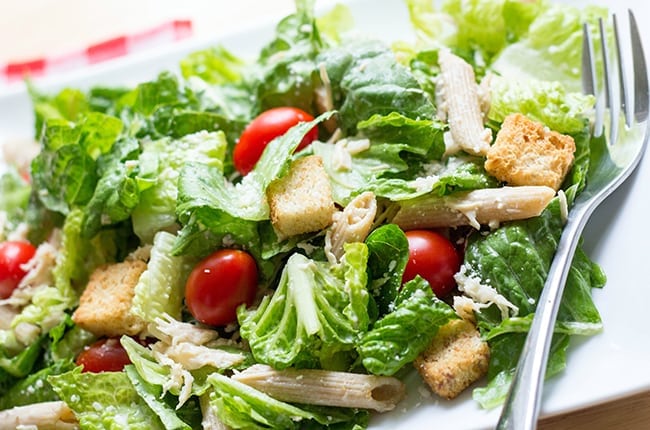What did Caesar do got My Salad, by Albert Jack
The name, of course, conjures a grumpy, toga-clad emperor tucking into a spot of lunch before perhaps throwing a Christian or two to the lions, in the name of entertainment, to keep the people of Rome happy.
But instead it turns out that Caesar salad is less than a hundred years old and comes from the most unlikely of places, Mexico.
Caesar Cardini (1896–1956) was born in Italy and emigrated to America with his three brothers at the beginning of the First World War. It was the era of Prohibition – also known as the Noble Experiment – when between 1917 and 1933 the sale, manufacture and transportation of alcohol was banned in the United States.
The aim was to improve the morality and behaviour of the American people, but in fact it just encouraged a huge rise in organized crime.
Realizing what lengths people would go to, just to have a drink or two, Caesar and his brother Alex saw a legal business opportunity and seized hold of it.
In 1924, they moved a short distance across the Mexican border, from Los Angeles, and set up a restaurant in Tijuana after the town became a firm favourite for southern Californians looking for a weekend party.
The Cardinis’ combination of strong alcohol and tasty Italian food proved to be a winner and their Fourth of July celebrations were so oversubscribed that, according to Caesar’s daughter Rosa, her father soon ran out of ingredients to feed his drunken customers.
He responded by throwing together a salad of basically whatever he had left in the kitchen: lettuce, croutons, Parmesan cheese, eggs, olive oil, lemon juice, black pepper and Worcestershire sauce.
Perhaps trying to make up for his dish’s simplicity, he brought the salad to the table, and with a theatrical flourish, tossed it in front of his customers so that every leaf was covered in the thick dressing.
The story goes that the dish proved so popular with a group of partying Hollywood film stars who had flown in for the weekend that Alex named it ‘Aviator salad,’ in their honour.
Later, once their restaurant was established on the ground floor of the Hotel Commercial, the Cardinis could afford to admit the truth and the salad was renamed after Caesar and soon became a firm favourite among the stars of the day, who demanded the dish wherever they travelled in the world.
But while Caesar salad isn’t centuries old, it turns out that the Romans were equally enthusiastic about eating raw leaves. Much like their modern counterparts, these salads would have consisted of a selection of leaves, including rocket, watercress, mallow, sorrel, goosefoot, purslane, chicory, beet greens, celery, chervil, basil and other fresh herbs.
Our very word derives from the Latin name salata herba, literally ‘salted herbs,’ which shows that both Julius Caesar and Caesar Cardini had a similar taste in strongly flavoured dressings.
Thanks to his impromptu way of dressing a salad, Caesar Cardini became a rich man and eventually trademarked his famous creation, in 1948.
Today the Cardini company remains America’s favourite producer of an ever-growing range of oils and dressings. – Albert Jack
Albert Jack AUDIOBOOKS available for download here
More Food History with Albert Jack







































